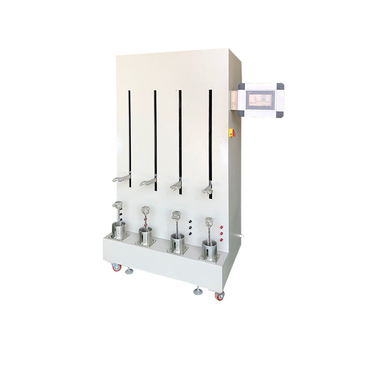conductor resistance constant temperature test machine
Understanding Conductor Resistance Constant Temperature Test Machines
In the field of electrical engineering, the performance and reliability of electrical conductors are paramount. One critical aspect that engineers must evaluate is the resistance of these conductors under various conditions. To ensure accurate and consistent measurements, especially at constant temperatures, specialized equipment known as conductor resistance constant temperature test machines are employed.
Importance of Conductor Resistance Testing
Conductor resistance testing is essential for determining the efficiency and safety of electrical systems. Resistance impacts the conductivity of materials, influencing how much energy is lost as heat when electricity passes through a conductor. High resistance can lead to overheating, which may cause failures in electrical systems, potentially leading to catastrophic events. Therefore, understanding and measuring conductor resistance accurately is crucial for the design and maintenance of electrical wiring systems, transformers, motors, and other components.
Operating Principles of Constant Temperature Test Machines
Conductor resistance constant temperature test machines operate on the principle of maintaining a stable temperature while measuring the resistance of conductors. The resistance of materials typically varies with temperature due to the movement of atoms and electrons within the conductor. Therefore, it is essential to conduct resistance tests at a specified and constant temperature to ensure reproducibility and accuracy.
Most of these machines utilize a four-wire measurement technique to eliminate the effects of lead and contact resistances. This technique involves two pairs of leads one pair carries the current through the conductor, while the other pair measures the voltage drop across the conductor. By applying Ohm's law (V = IR), the resistance can be accurately determined without interference from the intrinsic resistance of the measurement leads.
Features of Modern Testing Machines
conductor resistance constant temperature test machine

Modern conductor resistance constant temperature test machines come equipped with various features that enhance their functionality. Some of these features include
1. Temperature Control Systems Advanced machines incorporate sophisticated temperature control systems that maintain a consistent environment throughout the testing process. This may include built-in heating elements and insulation to ensure that the test environment remains stable.
2. Digital Readouts and Data Logging Many machines are equipped with digital displays that provide real-time measurements and allow for easy tracking of data over extended testing periods. Data logging capabilities enable engineers to store results for future analysis and quality control.
3. User-Friendly Interfaces Modern testing devices often come with intuitive interfaces, making it easier for operators to configure tests and review results. Some models also include software that allows for further analysis and reporting.
4. Portability Certain models are designed to be portable, allowing for testing in various locations, which enhances the flexibility of the testing process. This portability is especially useful in field applications where conductors are installed in remote areas.
Conclusion
Conductor resistance constant temperature test machines play a crucial role in ensuring the reliability and efficiency of electrical systems. By accurately measuring resistance in a controlled environment, these machines help engineers and technicians make informed decisions about materials and designs. As technology continues to advance, the capabilities and features of these testing machines are likely to develop further, improving the precision of electrical testing and contributing to safer and more efficient electrical systems in the future. Understanding their operation and importance is essential for professionals engaged in electrical engineering and maintenance.
-
Why the Conductor Resistance Constant Temperature Measurement Machine Redefines Precision
NewsJun.20,2025
-
Reliable Testing Starts Here: Why the High Insulation Resistance Measuring Instrument Is a Must-Have
NewsJun.20,2025
-
Flexible Cable Flexing Test Equipment: The Precision Standard for Cable Durability and Performance Testing
NewsJun.20,2025
-
Digital Measurement Projector: Precision Visualization for Modern Manufacturing
NewsJun.20,2025
-
Computer Control Electronic Tensile Tester: Precision and Power for the Modern Metal Industry
NewsJun.20,2025
-
Cable Spark Tester: Your Ultimate Insulation Assurance for Wire and Cable Testing
NewsJun.20,2025
 Copyright © 2025 Hebei Fangyuan Instrument & Equipment Co.,Ltd. All Rights Reserved. Sitemap | Privacy Policy
Copyright © 2025 Hebei Fangyuan Instrument & Equipment Co.,Ltd. All Rights Reserved. Sitemap | Privacy Policy
